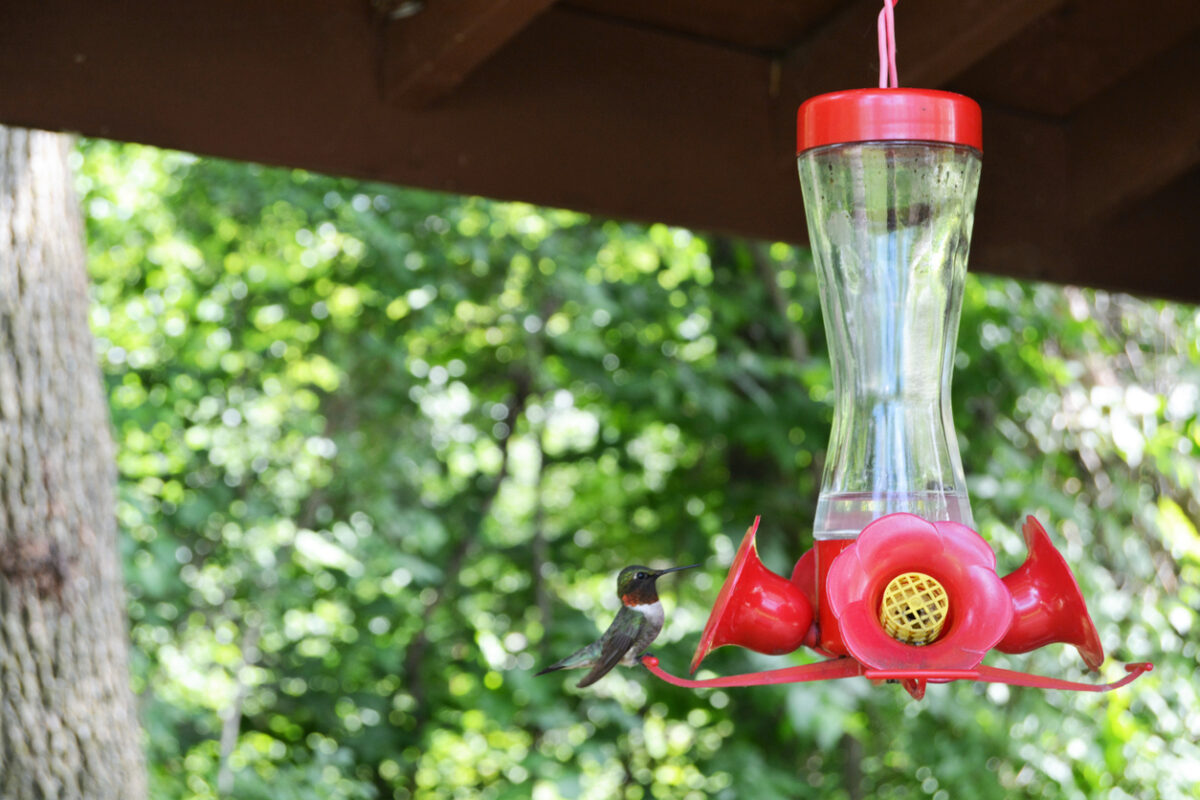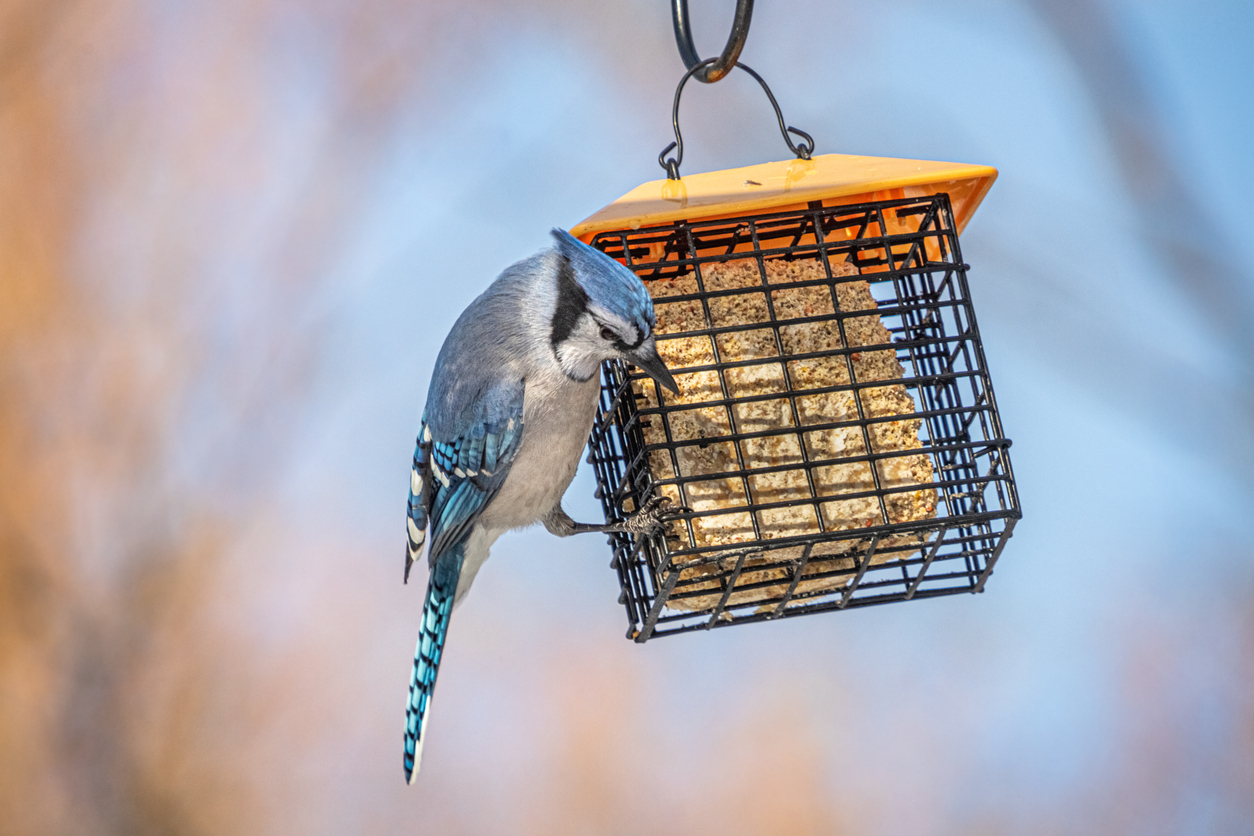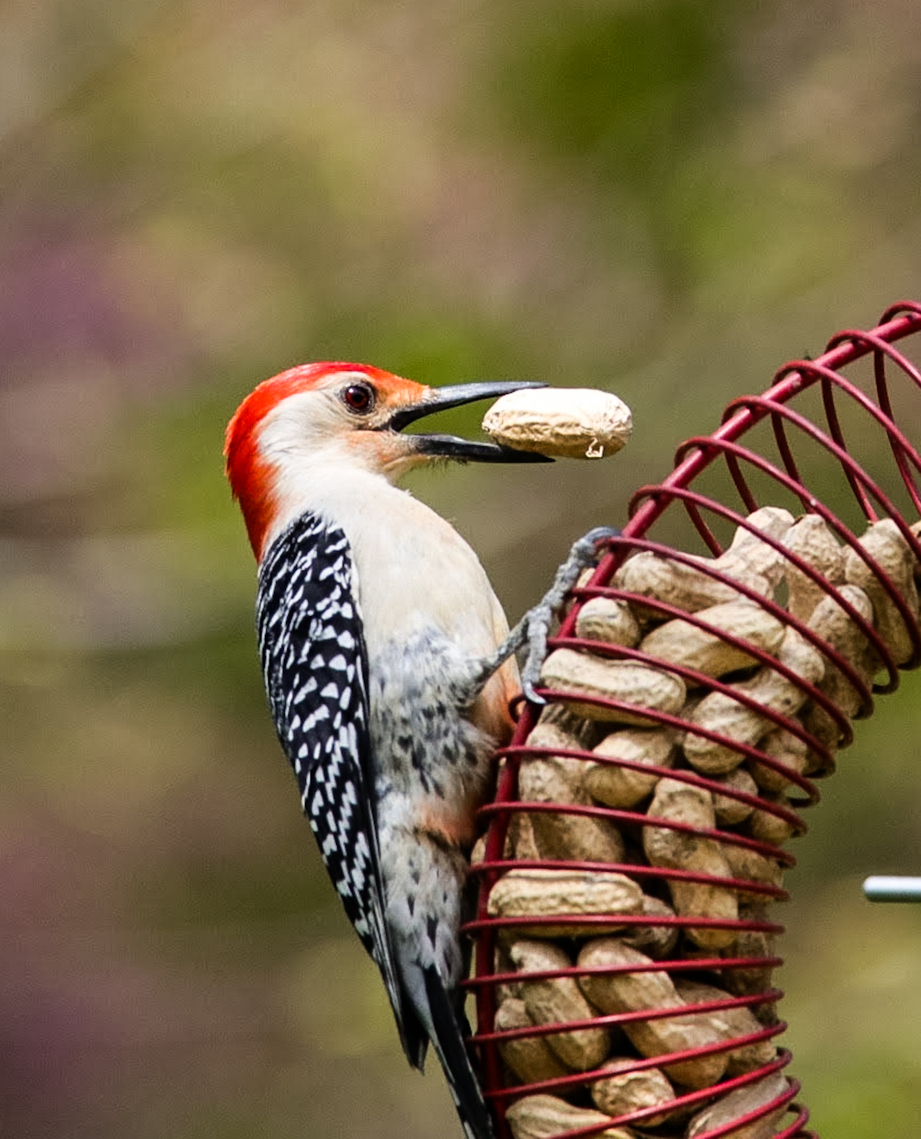We may earn revenue from the products available on this page and participate in affiliate programs. Learn More ›
Birdwatching is a lovely way to experience wildlife in a safe, captivating way. It is also a relaxing and gratifying hobby since you know you are providing food and fresh water to a variety of birds. It’s even beneficial for your yard, as many birds provide pest control. In general, birdwatching is a mindful experience, helping us feel calmer as we focus on birds’ vibrant feathers, pleasant songs, and ability to soar through the sky.
You can welcome a variety of bird species to your backyard by installing bird feeders in strategic locations around your yard.
RELATED: How to Attract Birds to Feeders: 13 Simple Strategies That Work
Top Tips for Placing Bird Feeders
The best bird feeders provide nourishment to birds safely and securely, while allowing you to observe them easily. It isn’t just important to select the right type of bird feeder—where you place it can affect how many birds and the types of species you attract.
1. Keep feeders clear of windows.
Window collisions are a real concern and can often be fatal to birds. To prevent window strikes, use window-mounted feeders that attach from a bracket or suction mounts, or place feeders within 3 feet of your windows. This will also allow you to get closeup views while still keeping birds safe.
If birds do hit your window from within that range, they should not be flying fast enough to hurt themselves. Place other feeders in your yard more than 10 feet from your home to give birds time to make adjustments and avoid your window.
2. Hang feeders high.
It’s important to hang bird feeders high enough to avoid both predators and contamination from pesticides that might be used to treat your lawn. Hang feeders high enough that ground predators such as feral cats will not be able to jump up and attack the birds on your feeders. Consider using stable S-shaped tree hooks to hang bird feeders from tree branches.
3. Provide natural shelter nearby.
Placing bird feeders near tree and shrub cover gives birds places to shelter from predators and weather, and a shady spot to rest between feedings. Consider situating feeders near evergreens and berry-producing trees and shrubs like bayberry, winterberry holly, chokeberry, American beautyberry, serviceberry, and crabapple, all of which have foliage that provides ample shade and protection.
Be careful not to locate your feeder too close to natural cover, since nearby branches can provide jumping-off points for cats and squirrels ready to cause trouble. It is best to place your yard’s bird feeders 10 to 12 feet from shelter.
4. Choose a quiet spot with little activity.
Birds will not visit feeders in locations with a lot of commotion—most species prefer a calm, quiet area to nosh. To attract more birds, set up feeders in the peaceful, undisturbed areas of your yard. Keep feeders clear of active areas like your patio, barbecue grill, swing set, pool, or garage door. If possible, it’s also a good idea to avoid situating feeders near wind chimes or other loud noises like heavy traffic.
5. Make sure feeders are visible to passing birds.
If birds are going to stop for a feeding, they need to be able to see the bird feeder. Place feeders in a sunny, open area that is visible to birds flying overhead. Choose a clear spot that gives you an unobstructed view of the feeder from a nearby window or glass door. Decks are a great spot to hang feeders because they’re easily accessible to both birds and homeowners.
RELATED: 30 Gorgeous Plants That Attract Hummingbirds to Your Garden
6. Protect feeders from the elements.
Weather can wreak all kinds of havoc on your bird feeders. If you live in an area prone to storms or strong winds, position feeders in sheltered areas so the bird feed won’t spill. This will also make it easier for you to clean and refill your feeders when the weather is bad. It’s also a good idea to protect feeders from heat and strong sun because birdseed and other types of bird food can spoil quickly.
7. Place feeders in natural feeding locations.
The best spot to install a feeder mimics a bird’s natural feeding preferences. The below list details where to hang food for popular birds and what the most common bird feeder types are.
Where to Hang 8 Popular Types of Bird Feeders
There are a variety of bird feeders from which to choose, depending on the species you are trying to attract to your yard. Here are tips for ideally placing some of the most popular bird feeders.
Bottle Hummingbird Feeders

Bottle feeders, or inverted feeders, contain a reservoir to fill with nectar. It sits upside down with the feeder at the bottom, and nectar is held inside the container by a vacuum created by trapped air. These feeders typically contain enough food to attract several hummingbirds. They should be placed where they’ll be protected from wind so no nectar spills out. It is also a good idea to install hummingbird feeders in the shade since the sugar solution can spoil quickly in the sun.
RELATED: The Best Hummingbird Feeders, According to Our Testing
Dish-style Hummingbird Feeders

Dish-style hummingbird feeders—also called saucer or tray feeders—hold the nectar in a shallow bowl. The birds feed through holes in the cover called ports. It is recommended that you hang more than one feeder and space them at least 10 feet apart to convince more hummingbirds to visit. Learn how to clean hummingbird feeders to avoid issues like bacteria growth.
Suet Feeders

Suet bird feeders feature a cage or basket made from wire or plastic mesh. Suet is animal fat that can be safely fed to birds in cold weather. Species who find suet appealing include woodpeckers, nuthatches, chickadees, jays, wrens, starlings, and more. Suet cakes are often used in the feeders for the birds to reach through openings in the mesh. They are typically made from a mixture of animal fat or a substitute like peanuts and other ingredients, including cornmeal, birdseed, and fruit. Suet feeders work best when placed near tree trunks or thick tree branches.
RELATED: 6 Incredible Things to Know About Hummingbird Nests
Tube Feeders

Typically hung from hooks or tree branches, tube bird feeders consist of a long cylinder made of clear plastic to hold birdseed. There are small openings and perches positioned along it so the birds can easily get to the seed, while also keeping squirrels out and birdseed dry. Some are designed for smaller seeds like thistle, and others for seed mixes. Tube feeders attract all types of bird species, but mostly smaller birds like sparrows, chickadees, titmice, finches, and grosbeaks.
Ground Feeders

Some birds, such as doves, pigeons, cardinals, sparrows, starlings, buntings, and towhees, prefer to forage for food on the ground. The best way to attract these birds is to use ground feeders. You can put more than one of these trays with short legs out with different types of food, including black oil sunflower seeds, thistle seeds, millet, cracked corn, peanuts, and dried fruit.
Only include one day’s supply of feed to avoid attracting raccoons, mice, rats, and other rodents. The best location for these feeders is under the roof of a covered patio or gazebo, or below tree cover.
Hopper Feeders

Hopper feeders consist of a tapered container that enables the feed to empty into a tray. Because they come in a variety of sizes, they can potentially provide a large amount of birdseed and attract many birds. As birds eat the seed from the feeding tray, the rest of the seed falls down into the tray so the birds can eat fresh seed when they want it.
These feeders are best when hung from tree branches or mounted on poles. Their familiar design often resembles a tiny house for birds to visit.
Thistle Seed Feeders

These feeders provide thistle, or nyjer seed, to many bird species, including goldfinches, purple finches, juncos, quail, mourning doves, and sparrows. Thistle bird feeders are made of wire mesh, a tube, and small feeding portals where the birds access the seed, or as cloth mesh “socks.” Birds often cling onto the mesh and grab the seed through its openings. It is best to place the feeder on or near a shrub or tree so birds feel safe and can discover it easily.
Peanut Feeders

Shaped like a round tube that looks similar to a wreath, a peanut feeder is filled with peanuts, either with or without shells. They have large holes so the birds can work to get the peanuts out. Blue jays, nuthatches, tufted titmice, and woodpeckers love this type of feeder. They are easy to mount by hook, but be sure to keep them high up and away from places where squirrels and other animals could reach the peanuts.


